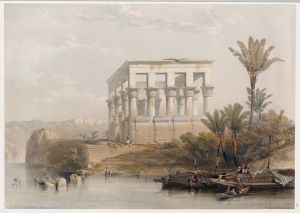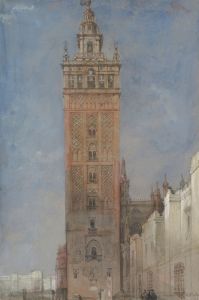
Tree and Graves on the Way to Tel El Armano, Egypt
A hand-painted replica of Elihu Vedder’s masterpiece Tree and Graves on the Way to Tel El Armano, Egypt, meticulously crafted by professional artists to capture the true essence of the original. Each piece is created with museum-quality canvas and rare mineral pigments, carefully painted by experienced artists with delicate brushstrokes and rich, layered colors to perfectly recreate the texture of the original artwork. Unlike machine-printed reproductions, this hand-painted version brings the painting to life, infused with the artist’s emotions and skill in every stroke. Whether for personal collection or home decoration, it instantly elevates the artistic atmosphere of any space.
Elihu Vedder (1836-1923) was an American symbolist painter, book illustrator, and poet, known for his mystical and allegorical works. One of his notable paintings is "Tree and Graves on the Way to Tel El Armano, Egypt," which reflects his fascination with the ancient and the mystical.
"Tree and Graves on the Way to Tel El Armano, Egypt" was created during Vedder's travels in Egypt, a journey that significantly influenced his artistic output. Vedder visited Egypt in the late 19th century, a period when Western artists and intellectuals were increasingly captivated by the ancient cultures of the Near East. This painting is a testament to Vedder's deep engagement with the landscape and history of Egypt.
The painting depicts a solitary tree and graves set against the backdrop of the Egyptian landscape, leading towards Tel El Amarna, the site of the ancient city of Akhetaten, which was established by the Pharaoh Akhenaten in the 14th century BCE. The choice of subject matter reflects Vedder's interest in themes of mortality, the passage of time, and the intersection of nature and human history.
Vedder's style in this painting combines realistic detail with a sense of the mystical and the symbolic. The tree, often a symbol of life and endurance, stands in stark contrast to the graves, which signify death and the past. This juxtaposition creates a contemplative mood, inviting viewers to reflect on the transient nature of human existence and the enduring presence of the natural world.
The use of light and shadow in the painting enhances its atmospheric quality. Vedder's careful attention to the play of light on the landscape and the textures of the tree and graves adds depth and dimension to the scene. The muted color palette, dominated by earthy tones, further emphasizes the somber and reflective mood of the painting.
"Tree and Graves on the Way to Tel El Armano, Egypt" is an example of Vedder's ability to blend realism with symbolism, creating works that are both visually striking and rich in meaning. The painting is part of Vedder's broader body of work that explores themes of spirituality, the supernatural, and the ancient past.
Elihu Vedder's contributions to American art were significant, and his works continue to be studied and appreciated for their unique blend of symbolism and realism. His time in Egypt and the resulting artworks, including "Tree and Graves on the Way to Tel El Armano, Egypt," remain important examples of how travel and exposure to different cultures can profoundly influence an artist's vision and output.





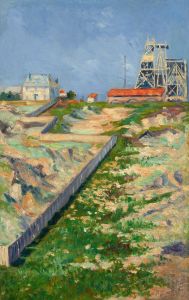
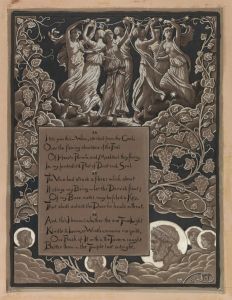
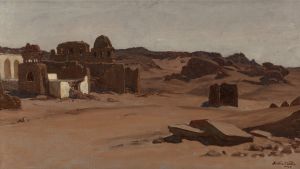

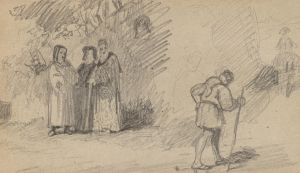
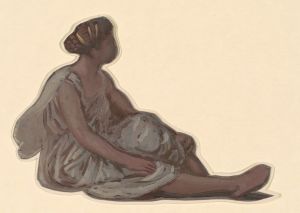
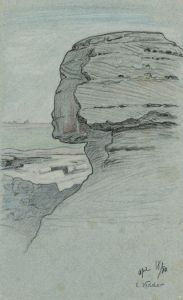
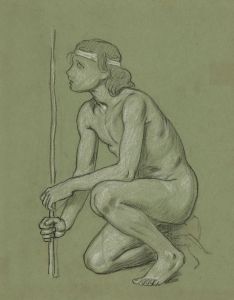
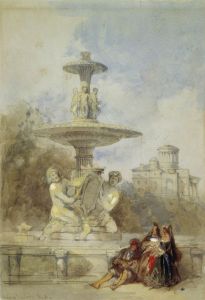
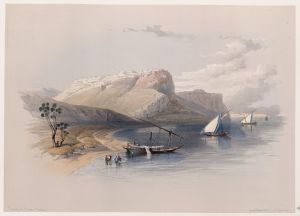
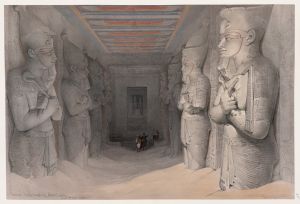
![Portico of the Temple of Kalabshi [Kalâbishah].](/imgs/217528/s/david-roberts-portico-of-the-temple-of-kalabshi-kalabishah-3a295995.jpg)
